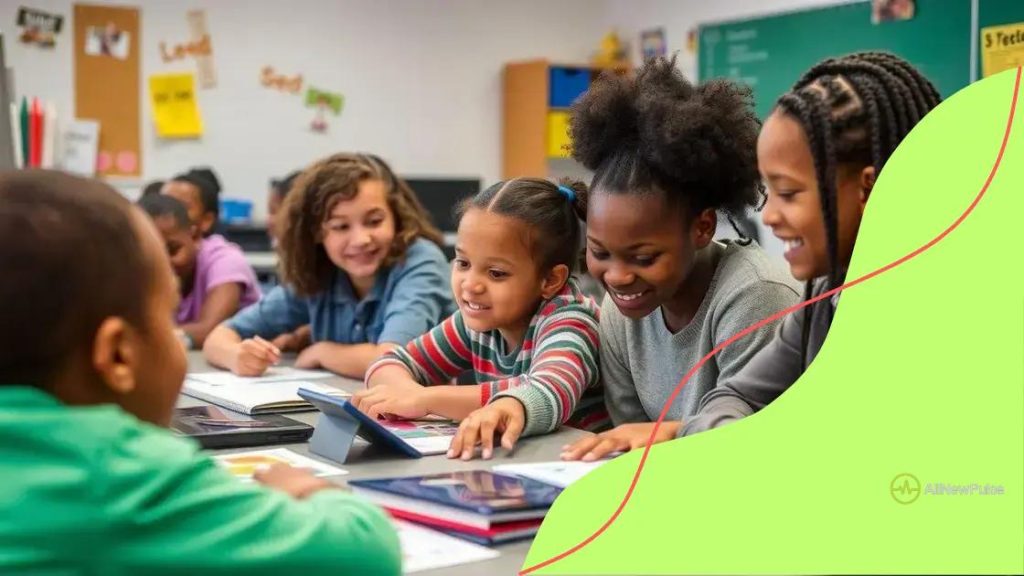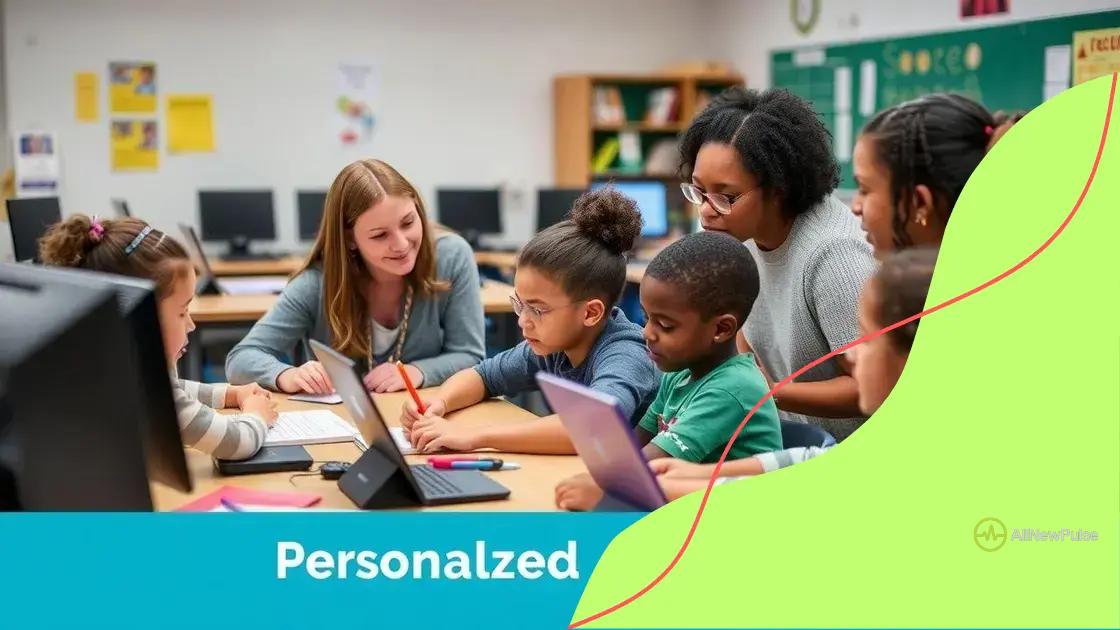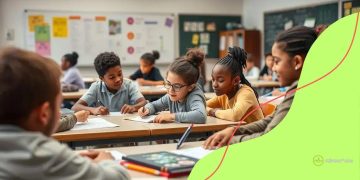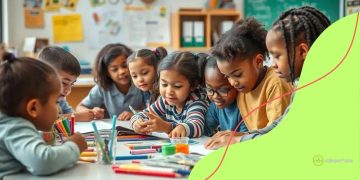The development of personalized learning pathways transforms education

The development of personalized learning pathways utilizes technology and data-driven strategies to tailor educational experiences to individual student needs, enhancing engagement and academic success.
The development of personalized learning pathways is changing the landscape of education. Have you ever wondered how a tailored approach can impact your learning experience? Let’s dive into how this innovative concept is shaping educational success.
Understanding personalized learning pathways
Understanding personalized learning pathways is crucial for creating effective educational experiences. These pathways allow students to learn at their own pace and style, enhancing their engagement and overall success.
What Are Personalized Learning Pathways?
Personalized learning pathways are customized educational experiences tailored to meet individual student needs. They include varying instructional strategies, materials, and assessments. This approach focuses on each student’s uniqueness.
By utilizing personalized pathways, educators can:
- Adapt lessons to fit diverse learning styles.
- Provide real-time feedback and support.
- Encourage students to take ownership of their learning.
Why Are They Important?
The importance of personalized learning pathways lies in their ability to motivate students. When learners have a say in their education, they are more likely to engage and succeed. Empowering students leads to lasting improvement in academic performance.
As students navigate their tailored pathways, they develop crucial skills such as self-directed learning and critical thinking. These skills prepare them for future challenges. Furthermore, teachers can monitor progress closely, adjusting strategies as needed to ensure success.
How Do They Work?
Implementing personalized learning pathways involves several key elements:
- Assessment of individual strengths and weaknesses.
- Development of customized learning plans.
- Use of technology to enhance learning experiences.
By leveraging technology, educators can create interactive and engaging learning environments. Platforms that support personalized learning offer resources tailored to each student’s needs. This alignment between technology and personalized pathways boosts students’ confidence in their academic abilities.
Benefits of tailored educational experiences
Benefits of tailored educational experiences are significant for both students and educators. Customized learning helps address unique student needs and promotes better academic performance.
Enhanced Engagement
When students experience tailored educational methods, they often feel more engaged. This engagement stems from learning that resonates with their interests and strengths. A personalized approach fosters curiosity and motivation, resulting in a more active learning environment.
Some key benefits of enhanced engagement include:
- Increased participation in class discussions.
- Higher rates of assignment completion.
- Greater enthusiasm for learning.
Improved Learning Outcomes
The impact of tailored educational experiences extends to measurable learning outcomes. As students progress along personalized learning pathways, they often achieve better results. The learning process becomes more effective when curriculum aligns with individual capabilities.
Research shows that personalized education can lead to:
- Higher test scores.
- Improved critical thinking skills.
- Greater retention of information.
This effectiveness is heightened when teachers monitor and adapt lessons based on ongoing assessments, ensuring that every student receives the support they need.
Development of Life Skills
Tailored educational experiences also aid in developing essential life skills. Students learn to take responsibility for their education, fostering independence and self-discipline. They can set personal goals and work towards them, which is invaluable for future success.
Additionally, personalized learning encourages:
- Collaboration with peers.
- Effective communication.
- Problem-solving capabilities.
Overall, tailored educational experiences contribute to preparing students for both academic and real-world challenges, equipping them with the skills they need to thrive.
How to implement personalized learning

Implementing personalized learning involves several strategies that cater to the unique needs of each student. These steps can significantly enhance the educational experience and support diverse learning styles.
Assess Student Needs
The first step in implementing personalized learning is to assess each student’s needs, strengths, and weaknesses. This assessment helps educators understand how to best support individual learners.
Methods for assessment can include:
- Standardized tests to gauge academic skills.
- Surveys and questionnaires to understand student interests.
- Observations to monitor engagement and participation.
Set Clear Learning Goals
After identifying student needs, it’s essential to set clear and achievable learning goals. Each student should have specific objectives that align with their strengths and interests. These goals provide direction and motivation.
When setting goals, consider:
- Using SMART criteria (Specific, Measurable, Achievable, Relevant, Time-bound).
- Involving students in the goal-setting process for ownership.
- Regularly reviewing and adjusting goals based on progress.
Utilize Technology and Resources
Technology is a valuable tool in personalized learning. By incorporating various technological resources, educators can offer more tailored educational experiences. Platforms that adapt to individual learning speeds and styles can enhance understanding and retention.
Examples of useful technologies include:
- Learning management systems that track progress.
- Interactive educational software that adjusts to student performance.
- Online resources for supplementary learning based on interest.
In addition to technology, teachers should provide a range of resources and materials to cater to different learning preferences, such as hands-on activities, visual aids, and group projects.
Foster a Collaborative Learning Environment
Collaboration among students is crucial for successful personalized learning. Creating opportunities for peer interactions allows students to learn from each other, share ideas, and develop social skills.
This collaborative approach promotes:
- Teamwork and communication.
- Supportive relationships among peers.
- Enhanced problem-solving skills.
By integrating these strategies, educators can effectively implement personalized learning and create an environment that nurtures every student’s potential.
Challenges in developing personalized pathways
Challenges in developing personalized pathways can hinder their effectiveness. While the goal is to create tailored experiences, various obstacles may arise during implementation.
Resource Limitations
One significant challenge is the lack of resources. Schools may not have the funding or technology needed to support personalized learning effectively. This limitation can lead to inconsistent experiences for students.
Without proper tools, educators face difficulties in:
- Acquiring necessary educational technologies.
- Providing diverse learning materials.
- Offering professional development for teachers.
Resistance to Change
Another common hurdle is resistance to change among educators and administrators. Implementing personalized pathways requires a shift in traditional teaching methods, which can be met with skepticism.
To overcome this, schools must encourage a culture of openness and flexibility. It is essential to:
- Communicate the benefits of personalized learning.
- Engage staff in training and workshops.
- Share success stories from other institutions.
Individual Differences
Every student has unique needs, strengths, and learning styles. While this diversity is beneficial, it also presents challenges in creating effective personalized pathways.
Teachers must find methods that address different learner profiles, which requires:
- Constant assessment and feedback.
- Innovative instructional strategies.
- A flexible curriculum that adapts to individual progress.
Successfully managing these individual differences is crucial for fostering an inclusive learning environment.
Data Management
Managing data effectively is a challenge in personalized learning. Educators need to track student performance and adapt pathways based on data collected.
This can include:
- Keeping accurate records of student progress.
- Using analytics to inform instructional decisions.
- Maintaining privacy and security for student information.
Overcoming these challenges is vital to ensuring that personalized learning pathways are successful and benefit all students.
Future trends in education technology
Future trends in education technology are shaping how students learn and teachers instruct. As technology advances, we see exciting innovations that enhance personalized learning experiences.
Artificial Intelligence in Education
One of the most significant trends is the growing use of artificial intelligence (AI). AI can analyze student data to provide tailored learning experiences. By understanding students’ strengths and weaknesses, educators can adjust their teaching methods.
Some benefits of AI in education include:
- Personalized learning materials that adapt to student needs.
- Automated grading and feedback for quicker assessments.
- Predictive analytics to identify students at risk of falling behind.
Virtual and Augmented Reality
Another trend is the rise of virtual reality (VR) and augmented reality (AR) in classrooms. These technologies create immersive learning experiences that enhance student engagement and understanding.
Examples of how VR and AR can be used include:
- Virtual field trips to historical sites or scientific environments.
- Interactive simulations for subjects like biology or physics.
- Real-world applications that provide hands-on experiences.
These technologies allow students to explore concepts in ways that traditional classrooms cannot offer, making learning more enjoyable.
Gamification of Education
Gamification is also becoming an essential part of education. This approach uses game elements in learning to motivate students and enhance their engagement.
Benefits of gamification include:
- Increased motivation through rewards and challenges.
- Collaboration and teamwork in a fun environment.
- Development of critical thinking and problem-solving skills.
As schools adopt gamification, they find that students are more likely to participate actively and enjoy their learning experiences.
Data-Driven Decision Making
Finally, data-driven decision-making is transforming how educators approach teaching. By analyzing student performance data, teachers can make informed choices about curriculum and instructional methods.
This trend leads to:
- Continuously improved teaching strategies based on evidence.
- Informed decisions regarding resource allocation and support.
- Tailored interventions for struggling students.
These future trends in education technology hold the promise of creating more effective, engaging, and personalized learning environments.
FAQ – Frequently Asked Questions About Future Trends in Education Technology
What role does artificial intelligence play in personalized learning?
Artificial intelligence analyzes student data to tailor learning experiences, helping teachers deliver customized instruction.
How can virtual reality enhance education?
Virtual reality creates immersive learning environments, allowing students to explore concepts in a more engaging and practical way.
What is gamification in education?
Gamification involves using game elements in learning to motivate students and make educational activities more enjoyable.
Why is data-driven decision-making important in education?
Data-driven decision-making allows educators to assess student performance accurately and refine their teaching strategies to improve outcomes.





